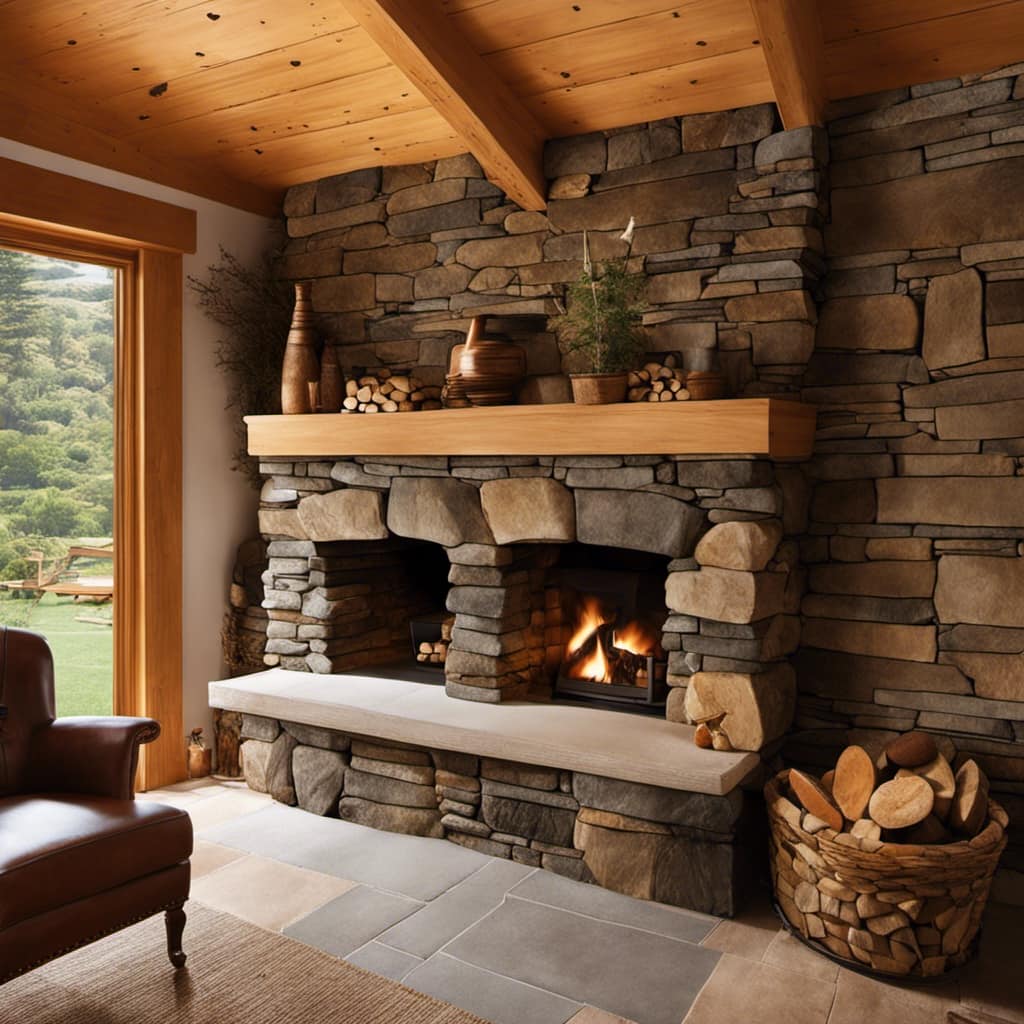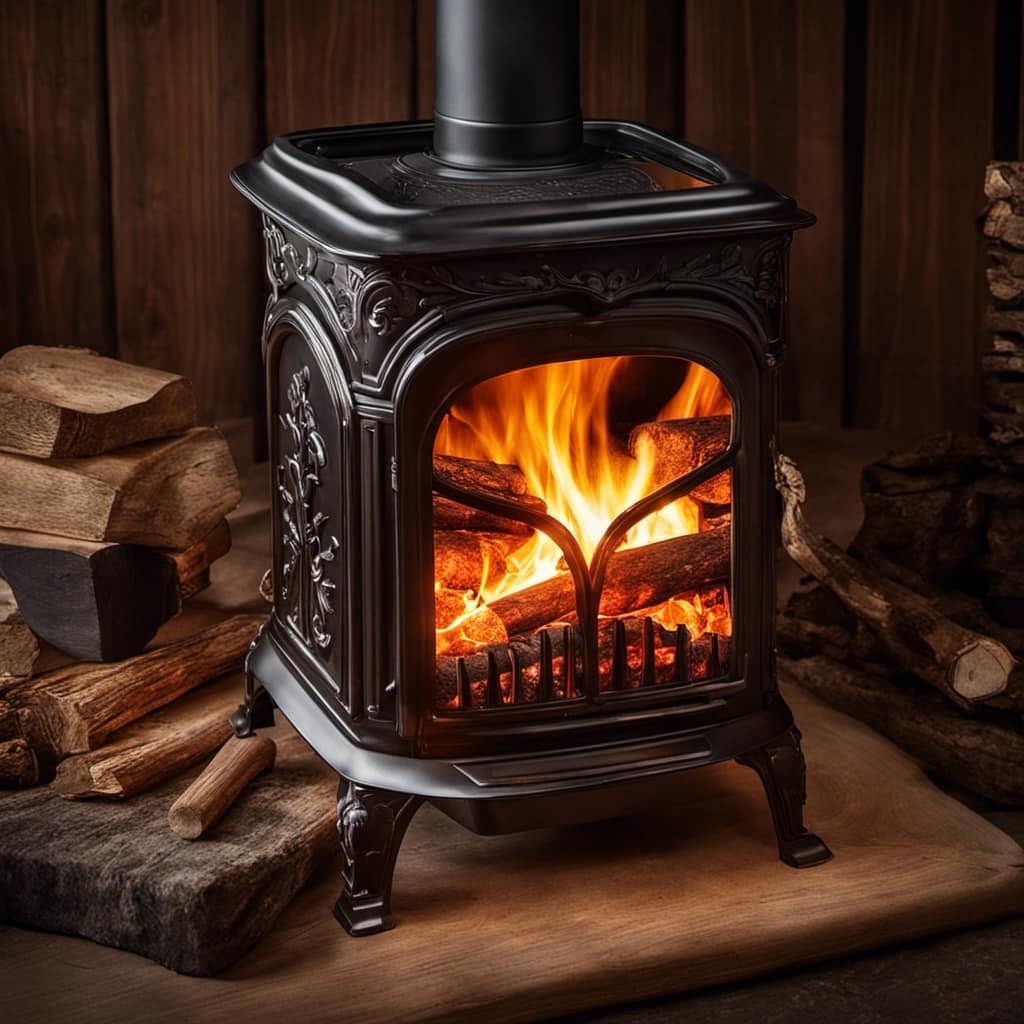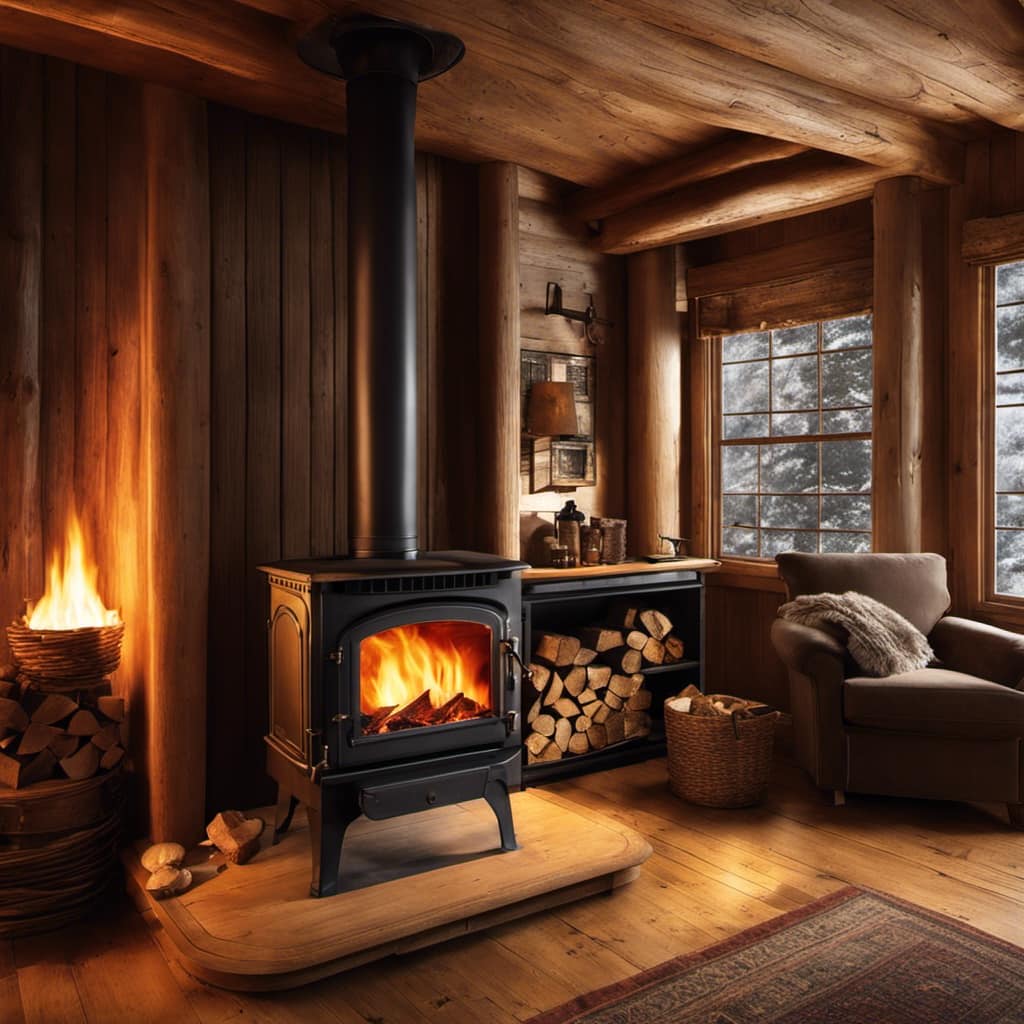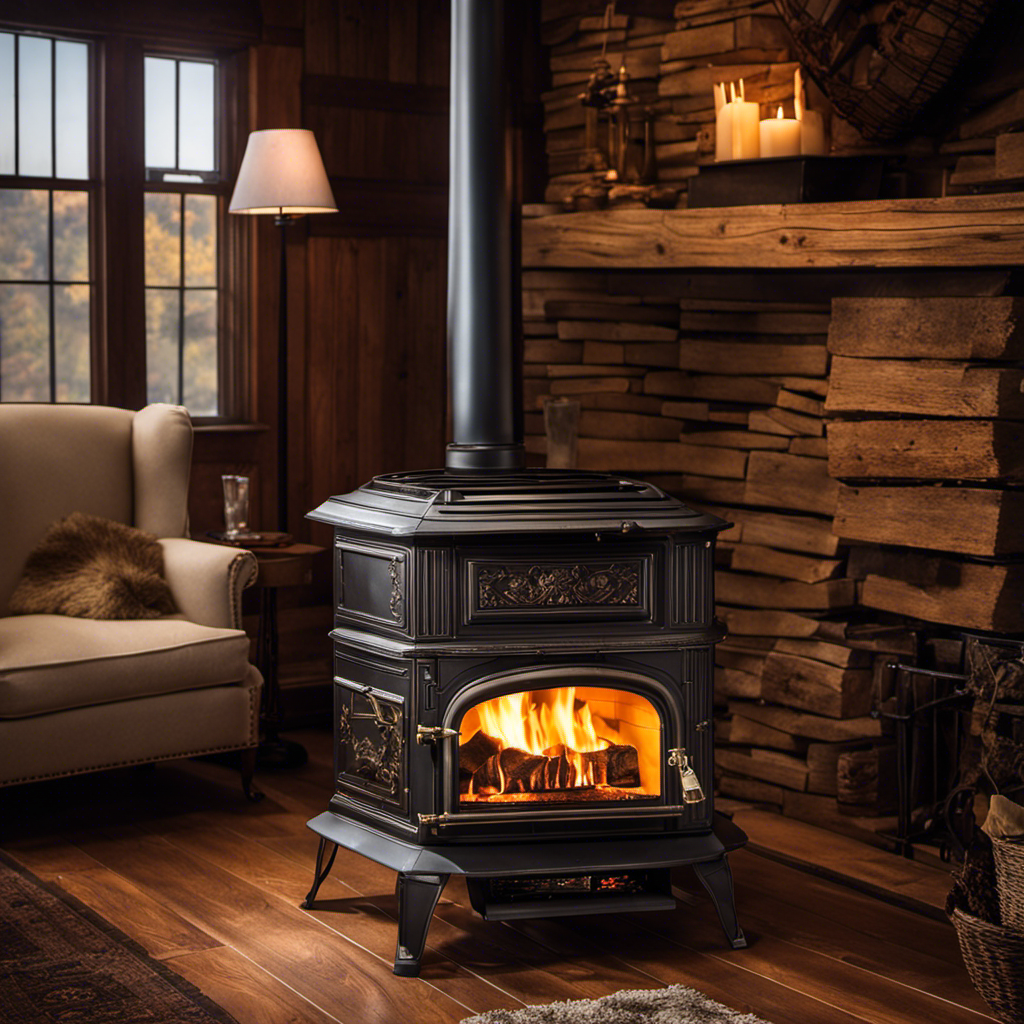Hello there!
Have you ever wondered how to banish that persistent wood stove smell from your house? Well, worry no more!
In this article, I’ll share some tried and true techniques to eliminate that lingering odor. From proper ventilation to deep cleaning methods, I’ve got you covered.
Plus, I’ll even throw in some natural remedies and DIY solutions to freshen up the air.

So, let’s get started and say goodbye to that wood stove smell once and for all!
Key Takeaways
- Regular chimney cleaning and inspections are essential to remove creosote buildup and prevent wood stove smells.
- Proper ventilation, such as opening windows and using fans, helps eliminate odors and improve indoor air quality.
- Deep cleaning techniques using baking soda and vinegar can effectively remove smoke residue and odors.
- Natural remedies, such as using houseplants and activated charcoal, can help freshen the air and eliminate wood stove smells.
Understanding the Source of the Wood Stove Smell
I’ve been researching and testing different methods to understand where the wood stove smell is coming from in my house.
The first step in addressing the smell is to identify the causes. One common cause is a buildup of creosote in the chimney. This sticky substance can emit a strong odor when the stove is in use.
Another possible cause is a leak in the chimney or stovepipe, allowing smoke and odor to escape into the house. Additionally, the smell can be intensified if the wood being burned isn’t properly seasoned or if the stove isn’t burning efficiently.

To find solutions, regular chimney cleaning and inspections are essential to remove creosote buildup and fix any leaks. It’s also important to use dry and well-seasoned wood to minimize odor. Lastly, ensuring proper ventilation and draft in the stove can help improve the burning process and reduce lingering smells.
Proper Ventilation to Eliminate the Odor
To eliminate the odor, opening windows and using a fan can help in improving ventilation. This is crucial for improving indoor air quality and getting rid of the wood stove smell.
Here are three key reasons why proper ventilation is important:
-
Removing pollutants: Opening windows allows fresh air to come in and helps in removing the stagnant air that may contain odors and pollutants.

-
Reducing moisture: Good ventilation helps in reducing moisture levels, preventing the growth of mold and mildew, which can contribute to unpleasant odors.
-
Improving overall air quality: Proper ventilation helps in circulating fresh air and removing stale air, which can have a positive impact on the overall air quality in your home.
While improving ventilation is essential, deep cleaning techniques can also be effective in removing smoke residue and lingering odors.
Deep Cleaning Techniques for Removing Smoke Residue
Using baking soda and vinegar can be an effective way to tackle smoke residue and eliminate lingering odors. When it comes to smoke residue removal, it’s important to have a reliable cleaning method that doesn’t involve the use of harsh chemicals. Baking soda is a natural deodorizer and can help absorb and neutralize odors, while vinegar has antimicrobial properties that can help kill bacteria and remove stains.

| Cleaning Method | Steps |
|---|---|
| Baking Soda | 1. Sprinkle baking soda on affected areas. 2. Let it sit for a few hours or overnight. 3. Vacuum or wipe away the baking soda residue. |
| Vinegar | 1. Mix equal parts vinegar and water in a spray bottle. 2. Spray the solution onto the smoke residue. 3. Scrub gently with a sponge or cloth. 4. Rinse with water and dry thoroughly. |
While these DIY methods can be effective, sometimes professional cleaning services may be necessary for more stubborn smoke residue or extensive damage. They have specialized tools and techniques to thoroughly clean and restore your home. It’s important to consider their expertise and experience when deciding on the best approach for your situation.
Natural Remedies and DIY Solutions for Freshening the Air
Although I’ve tried using essential oils to freshen the air, I personally find that opening windows and letting in fresh air is the most effective natural remedy. Natural air purifiers and homemade air fresheners can be great alternatives to chemical-based products. Here are three options to consider:
-
Houseplants: Certain plants, like aloe vera and spider plants, can help remove toxins from the air and improve indoor air quality.
-
Baking soda: Placing a bowl of baking soda in a room can help absorb odors. You can also mix it with water and essential oils to create a natural air freshener spray.

-
Activated charcoal: This odor-absorbing powerhouse can be placed in small pouches and strategically positioned around the house to eliminate unwanted smells.
Preventing Future Wood Stove Smells in Your Home
Honestly, I’ve found that regularly cleaning and maintaining my wood stove is the key to preventing future smells in my home. Wood stoves can emit odors due to the buildup of creosote and soot, which can be minimized by proper maintenance.
Here are some maintenance tips for a wood stove to keep your home smelling fresh.
-
First, make sure to clean the stove regularly. Remove ashes and debris from the firebox and clean the glass window to prevent any odors from lingering.

-
Secondly, inspect and clean the chimney annually to remove any creosote buildup. This won’t only prevent odors but also reduce the risk of chimney fires.
Additionally, investing in an air purifier can help eliminate wood stove odors. Look for a purifier with activated carbon filters, as they’re effective in removing odors. Another option is an ozone generator, which releases ozone to neutralize and eliminate odors.
Frequently Asked Questions
Can the Wood Stove Smell Be Harmful to My Health?
Wood stove smell can be harmful to children and cause respiratory issues. It’s important to ensure proper ventilation and minimize exposure. Consult a professional if you have concerns about the impact on your health.
How Long Does It Usually Take for the Wood Stove Smell to Dissipate?
It usually takes a few days for the wood stove smell to dissipate. To remove the smell quickly, try opening windows for ventilation, using air purifiers, and cleaning surfaces with vinegar or baking soda.

Can I Use Scented Candles or Air Fresheners to Mask the Wood Stove Smell?
Yes, you can use scented candles or air fresheners to mask the wood stove smell. However, it’s important to address the source of the smell first and ensure proper ventilation for a long-term solution.
Are There Any Professional Services Available for Removing Wood Stove Smells?
Professional services can be a great solution for removing stubborn odors, like those from a wood stove. They have the expertise and tools to effectively eliminate the smell and restore freshness to your home.
Does the Type of Wood Used in the Stove Affect the Intensity of the Smell?
The type of wood used in a wood stove can affect the intensity of the smell. Some woods, like pine, can produce a stronger odor. To minimize the smell, choose hardwoods like oak or maple and ensure proper ventilation.
Conclusion
Well, now you know how to get rid of that lovely wood stove smell in your house. Isn’t it wonderful? You can say goodbye to the cozy ambiance and rustic charm and hello to a fresh, odorless home.

Who needs that comforting scent of burning wood anyway? So go ahead, follow these practical tips, and enjoy the sterile atmosphere of a wood stove-free house.
Happy deodorizing!
Growing up surrounded by the vast beauty of nature, Sierra was always drawn to the call of the wild. While others sought the comfort of the familiar, she ventured out, embracing the unpredictable and finding stories in the heartbeat of nature.
At the epicenter of every remarkable venture lies a dynamic team—a fusion of diverse talents, visions, and passions. The essence of Best Small Wood Stoves is crafted and refined by such a trio: Sierra, Logan, and Terra. Their collective expertise has transformed the platform into a leading authority on small wood stoves, radiating warmth and knowledge in equal measure.











